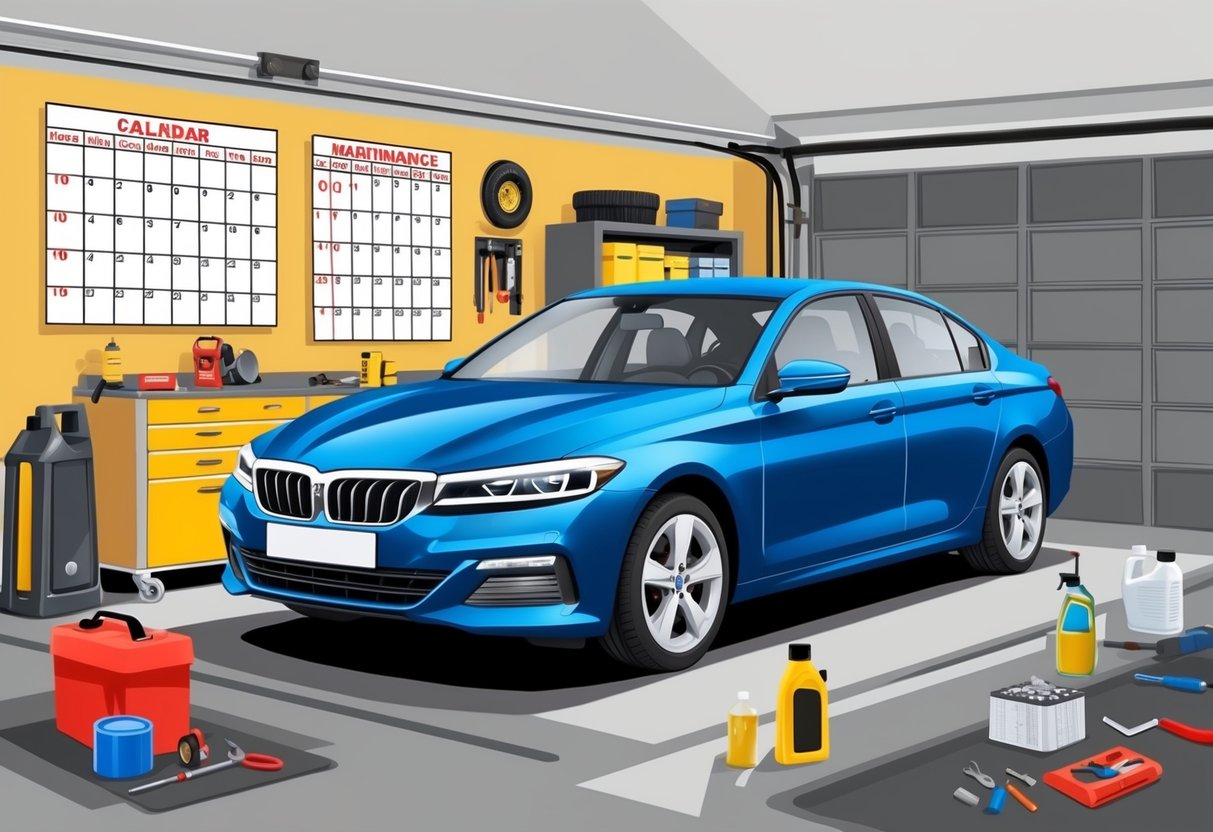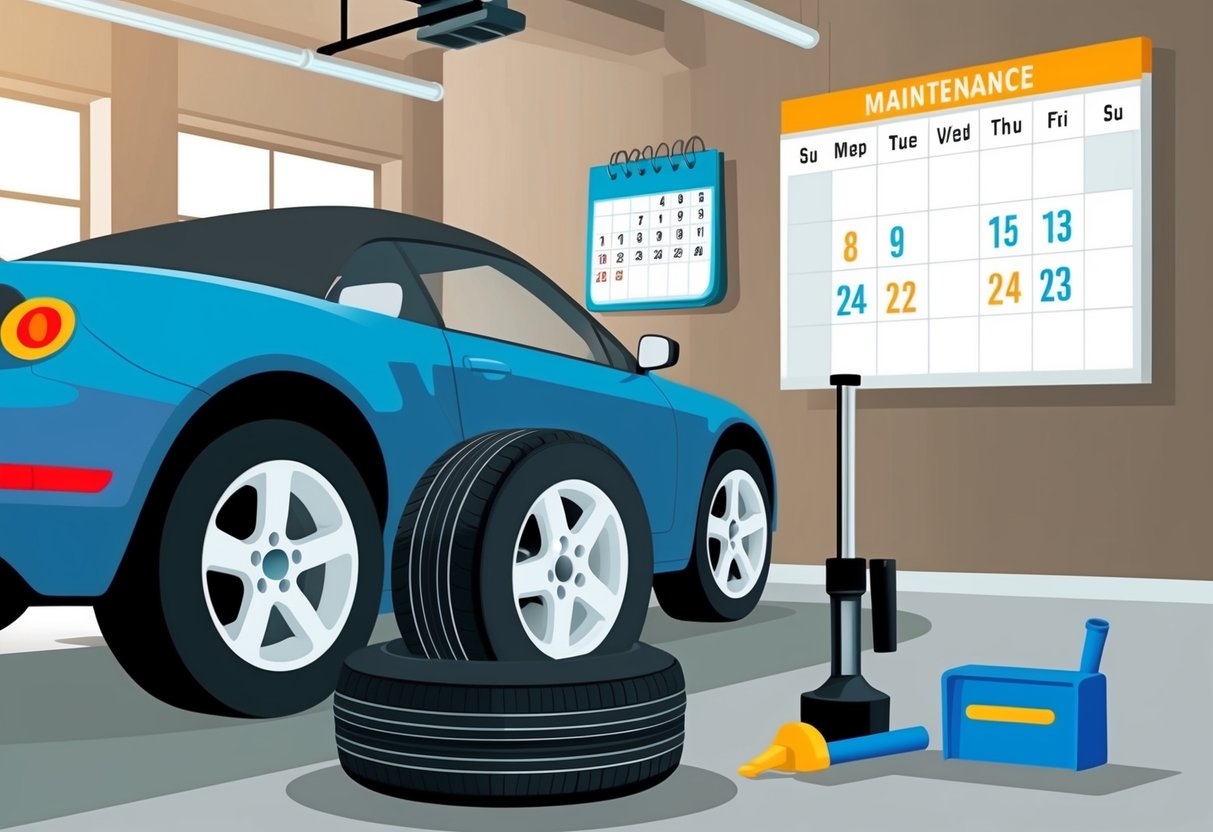
Establishing a Vehicle Maintenance Plan
Creating a vehicle maintenance plan begins by recording all performed and scheduled services.
Keeping a maintenance history log helps track which tasks have been completed and identifies upcoming needs.
Many vehicle owners use a spreadsheet or a dedicated car maintenance app to record oil changes, filter replacements, and inspections.
Breaking down routine tasks into monthly, quarterly, and annual intervals makes the plan manageable.
Setting reminders for important milestones, such as timing belt replacements and brake pad checks, reduces the risk of forgetting critical maintenance.
Using a timeline that breaks maintenance into manageable intervals results in fewer unexpected repairs and a longer-lasting vehicle.
Owners should regularly review the plan and update it when new issues arise or as the car ages.
Coordination between scheduled tasks and documented maintenance history further simplifies tracking and ensures compliance with warranty requirements.
Routine Maintenance Tasks for Every Car Owner
Consistent auto maintenance can prevent costly repairs, boost safety, and extend the useful life of a vehicle.
By handling these specific routine tasks, car owners can maintain vehicle performance and save money on future repairs.
Oil and Filter Changes
Regular oil and filter changes are some of the most crucial aspects of auto maintenance.
Engine oil lubricates vital components, reduces friction, and helps carry heat away from the engine.
Over time, oil degrades and collects contaminants, which can lead to premature engine wear or expensive repairs.
Most manufacturers recommend oil changes every 3,000 to 5,000 miles, but it’s best to consult the owner’s manual for exact intervals.
Skipping oil changes may void warranties or cause costly engine damage.
The oil filter should be replaced with every oil change to ensure new oil stays clean and effective.
Doing oil changes at home requires basic tools and safety precautions.
Many owners choose to track their service dates to stay on schedule.
For more advice on creating a car maintenance checklist, refer to resources from tire and auto experts.
Checking Tire Pressure
Maintaining proper tire pressure is essential for tire longevity, fuel efficiency, and overall vehicle safety.
Under-inflated or over-inflated tires can cause uneven tread wear, reduced fuel economy, and increased risk of blowouts.
Drivers should check tire pressure at least once a month and before long trips, using a reliable gauge.
Recommended pressure levels are listed in the driver’s door jamb or the owner’s manual.
Proper tire pressure helps improve traction and braking performance in all driving conditions.
Routine tire inspections should also include looking for uneven wear and foreign objects.
Tire rotations every 6,000 miles help extend tire life and maintain even wear.
Adjusting tire pressure to recommended levels can prevent unnecessary tire replacements and boost gas mileage, as suggested by several vehicle maintenance guides.
Inspecting Brake System
The brake system is central to vehicle safety, requiring regular servicing and detailed inspections.
Worn pads or low brake fluid diminish stopping power and can lead to unsafe driving conditions.
Squealing, grinding noises, or a soft pedal feel are common signs that maintenance is needed.
Car owners should visually check brake pads and rotors for wear every few months.
It’s important to address any leaks or low brake fluid promptly, as this may signal a larger issue within the system.
A mechanic should also inspect the brake system during regular servicing for a more thorough assessment.
Routine brake checks should not be overlooked, as well-maintained brakes ensure shorter stopping distances and prevent costly repairs.
Addressing brake issues early can minimize downtime and keep repair costs manageable, reinforcing the importance of systematic auto maintenance.
Maintaining Tires and Wheel Alignment

Regular tire inspection and proper wheel alignment are essential steps in any car maintenance schedule.
Maintaining the correct tire pressure and keeping wheels aligned not only improves safety but also increases fuel efficiency and extends tire life.
Monitoring Tread Wear
Tire tread depth affects a vehicle’s ability to grip the road, especially in wet or slippery conditions.
Drivers should check their tread at least once a month using a tread depth gauge or the “penny test.”
Insert a penny into the tread grooves; if Lincoln’s head is visible, the tire needs replacement.
Uneven or rapid tread wear can signal improper inflation, alignment problems, or suspension issues.
Regularly monitor tires for signs of cupping, cracks, bulges, or objects lodged in the tread.
Maintaining proper tire pressure according to the manufacturer’s recommendation can prevent premature tread wear and improve gas mileage.
It is also beneficial to rotate tires every 5,000–7,000 miles for even wear.
Proper rotation ensures all tires wear at the same rate, helping them last longer and save money on replacements.
For additional details about tire care advice, visit this car maintenance checklist and tire maintenance tips on Tires Plus.